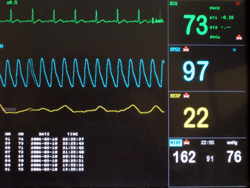Extensive pan-European cardiovascular disease data
Carotid artery intima media thickness is regarded as an indication of the progression of atherosclerotic disease. Commonly known as hardening of the arteries, atherosclerosis is a major cause of cardiovascular disease (CD). The social and economic costs of this disease run very high, particularly in developed countries. Globally, CD is responsible for 17 million deaths each year. The IMPROVE project aimed to provide a comprehensive and statistically significant account of risk factors for the increase of thickness of artery walls. Patients from seven centres throughout Europe, from Finland down to Umbria, Italy were studied as an example of a high-risk group. Using ultrasound to measure carotid intima media thickness (IMT), the scientists determined if there were correlations between personal history of disease, life style, physiological characteristics and thickening of the artery wall. The data was analysed by conventional statistical methods and neural networks and was also adjusted for appropriate confounders. Among the physiological indicators, diastolic blood pressure, weight and body mass index were found to be determinants of IMT. A range of aspects of blood count were studied. High and low density lipoproteins together with creatinine showed positive links with IMT and leucocytes were particularly strong determinants. Not surprisingly, lifestyle, in particular smoking status, total alcohol consumed and coffee intake were linked directly to artery wall thickness. Physical activity, after adjustment for confounders and by centre, was shown to be negatively correlated with IMT although the data was not shown to be significantly significant. Further data on personal history of disease revealed that gall stones, tuberculosis and allergy status are associated with IMT. From a family history point of view, cardiovascular disease and hypertension showed particular importance. The collation of extensive data relating to physical, genetic and lifestyle markers can aid in the identification of asymptomless atherosclerotic patients. Formulation of diagnostic protocols for the early identification of high risk individuals can then follow. The data has been widely disseminated through meetings, scientific journals and the website at http://users.unimi.it/improve/index.htm







